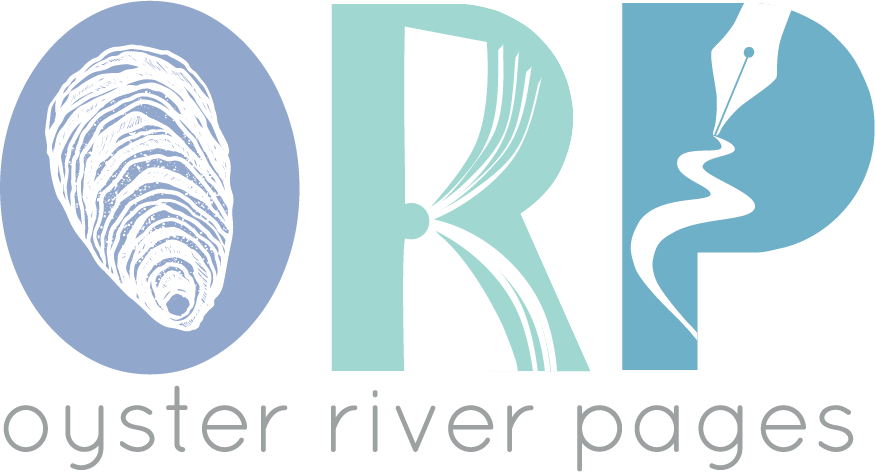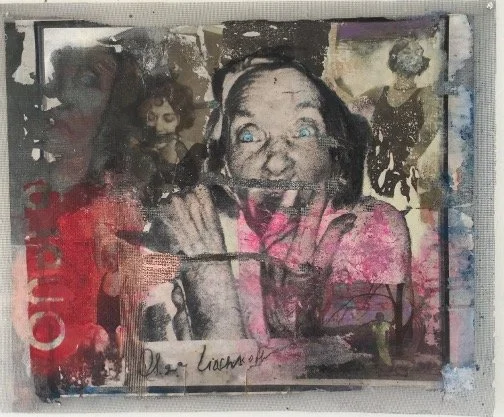"Mother Memory" (Art Exhibit Series, 4/10)
Toti O’Brien
The following is part of the Mother Memory art exhibit series, a pairing of literature with art curated by the exhibitor, Toti O’Brien. Oyster River Pages is pleased to present this series in weekly installments.
Cynthia Anderson is a long-time resident of the Mojave Desert. Desert landscape—its geography, geology, flora, and fauna—is unique and extreme. Prone to alter our perception of dimensions and distance, causing us to revise our role as individuals, or even as humans, it offers in exchange a crash-course in patience, resilience, and survival. Desert nature is also endowed with spectacular, if disquieting, beauty, which inevitably imbues the creative outputs of those it surrounds. Anderson’s writing is no exception to the rule. Often accompanied by photographs taken by her husband, it engages the ecosystem in a dialogue nurtured by acute attention and genuine empathy. That her poetry gradually shifted from long form free verse to a masterful, nuanced exploration of traditional Japanese short form (haiku, haibun, senryu, tanka, cherita) may be no surprise. The desert pares down, constantly demonstrating how to shed superfluities and distillate sheer essence. Anderson’s concise compositions are both crystalline and stinging. Tightly bound to sensorial impression—what we can ear and see—they excavate as well the emotional layer of which the outer world is the mirror, that the outer world stirs, subverts, re-mixes, reshapes. Personal history and family ties pulse under the surface, adding to the polished descriptions a glimpsed-at third dimension—moving shadows dancing under thin ice.
The poems that follow belong to a short collection, The Missing Peace. I chose them because they contrast what I said so far, hence being an extraordinary, precious anomaly. Here, nature steps back—or, in other words, the ice breaks, and for some reason I think of Snow White’s mom (the true one) pricking her finger, spraying red the immaculate coat of the windowsill. The cherita I selected are not consecutive. I extracted them from different parts of the book, in order to provide a kind of cross-section. I respected, tough, the sequence in which they originally appear, hoping to give a sense, if elusive, of the whole narrative.
Selections from The Missing Peace
by Cynthia Anderson
holding
newborn me
my mom beams
for the camera—
never that happy
with me again
***
I unwrap
the gifts mom
gave me—
my crosses to bear
and the will
to dismantle them
***
time machine—
in a dream
mom’s grey hair
turns black
still she asks
for favors
***
why I’m distant—
medusa
my nemesis
writhes her head
crazed snakes
spit venom
***
unsung burden
a daughter
without
a mother
without
a daughter
***
dawn
the golden sun
of an oriole
no tears
after her death
just relief
***
the ceiling creaks
like a knock
at the door
I could never reconcile
her kindness
with her cruelty
***
dear mom
now that you’re gone
it’s easier for me
to be with you
your silence
heals
Peter Liashkov | Olga Liachkoff (Rage) | Archival Digital Print | 29” x 35” | 2017
For this show, Peter Liashkov has chosen four images from the imposing pool of his work, intending to provide a bird view of his mother’s long, complex existence. Such an abridged summary necessarily implies significant distance between each of the “snapshots,” hence highlighting the metamorphoses of a life crossed by constant migration and radical shifts of status, language, culture, and habits. From nineteen-twenties Latvia, where a talented young woman illustrates fairy tales, to the job as a governess in nineteen-thirties Rome, to post-World War II France, where her son is born, to nineteen-fifties Argentina, to the US where Olga, much later, faces the hardships of old age, to raucous Los Angeles, with its babel of tongues and humanities that her blurred mind can no longer harmonize. I am sharing the last—and most painful—of the images, which somehow implies them all, and poignantly elucidates how the artist treats the human figure (the whole, or just the face), how he excavates and explores its every fold, questioning the flesh to the point of eroding it, laying bare, together with the present truth, the numerous layers it conceals and reveals. Both when cast on a single individual or when tackling collective issues, Liashkov’s gaze is a laser, never failing to expose (or embrace) the past history that inevitably underscores the here and now, altering its contours and its colors. The artist’s frequent use of fiberglass mesh evokes architectural construction, or rather demolition—what emerges under ripped wallpaper, the very soul of the walls, what circulates and throbs under the makeup, under the skin.
A California resident and poet for over 40 years, Cynthia Anderson writes about the natural world and her family history. A multiple Pushcart Prize and Best of the Net nominee, she has published thirteen collections of poetry, of which the most recent are The Far Mountain (Wise Owl Publications, 2024), Arrival (Sheila-Na-Gig Editions, 2023) and Full Circle (Cholla Needles Press, 2022). Her haiku, senryu, haibun, cherita, tanka, as well as her traditional long form poems, have appeared in dozens of journals and magazines (such as Akitsu Quarterly, MacQueen's Quinterly, Sheila-Na-Gig, Silver Birch Press, and Writing in a Women's Voice) and have been included in several anthologies, such as SOLO Voyage (Solo Press, 2023), Unknotting the Line: The Poetry in Prose (Dos Gatos Press, 2023), Bird Whistle (bottle rockets press, 2023), and Campfire Stories Vol. II (Mountaineers Press, 2023). Cynthia is co-editor of the anthology A Bird Black As the Sun: California Poets on Crows & Ravens, described by Jane Hirshfield as "a book whose heights, swoops, visions, and versatile multiplicities of flight-path are worthy of the trickster-bird celebrated in its pages." https://www.cynthiaandersonpoet.com/
Peter Liashkov has maintained an art practice since the 1980s. His work has been deeply rooted in the human figure, two-dimensionally explored in mixed media techniques on unusual grounds like synskin, fiberglass mesh and other translucent materials. Currently, his primary interest is reflecting on the ever-changing richness of Los Angeles, since his immigration here 65 years ago. He is Professor Emeritus from Art Center College of Design, and has traveled extensively throughout Europe and the Middle East. Since retiring from teaching he has done residencies in Russia, Norway, Argentina and the U.S. https://www.pliashkov.com/




